The modern appearance of the city began to take shape during the reign of the Mughals. The abundance of cultures and religions made the Indian capital colorful and unlike any other city in the world. Here, the rich architectural heritage was not only preserved, but some monuments of the past are still used for their intended purpose.
Local temples deserve special mention. Anyone can enter the complexes, regardless of religion. There are restrictions only on the time of the behavior of the services, and you must also follow the rules of conduct and dress code. Akshardham, Lotus Temple, Gurdwara Bangla Sahib, Jama Masjid are beautiful both outside and inside. Each religious object has a rich history reflected in the design details.
What to see and where to go in Delhi?
The most interesting and beautiful places for walking. Photos and a short description.
- Akshardham
- Red fort
- Gateway of India and Rajpath
- Rashtrapati Bhavan
- Humayun's Tomb
- Lotus Temple
- Minaret Qutub Minar
- Chandni Chowk Market
- Mahatma Gandhi Memorial
- Gandhi Smriti Museum
- National Museum of India
- National Railway Museum
- National Gallery of Modern Art
- Gurdwara Bangla Sahib
- Jama Masjid Mosque
- Lakshmi Narayan Temple
- Chattarpur temple complex
- Gurudwara Sis Ganj Sahib
- Radha Parthasaratha Temple
- Purana Qila fortress
- Fort Tughlaqabad
- Agrasen Ki Baoli Well
- Tomb of Safdarjang
- Mausoleum of Nizamuddin
- Jantar Mantar
- Mehrauli Archaeological Park
- Architectural complex Haus Khas
- Worlds of Wonder Amusement Park
- Mughal gardens
- Gardens of Lodi
Akshardham
The temple complex covers an area of 12 hectares. It has been called "the residence of a god that cannot be moved". The main temple is a massive structure. Its design combines various Indian styles. Due to its size, it is included in the Guinness Book of Records. It is surrounded by picturesque parks and gardens. Nearby there is a cinema and a light and music fountain. Water from many reservoirs of the country was brought to the local lake.
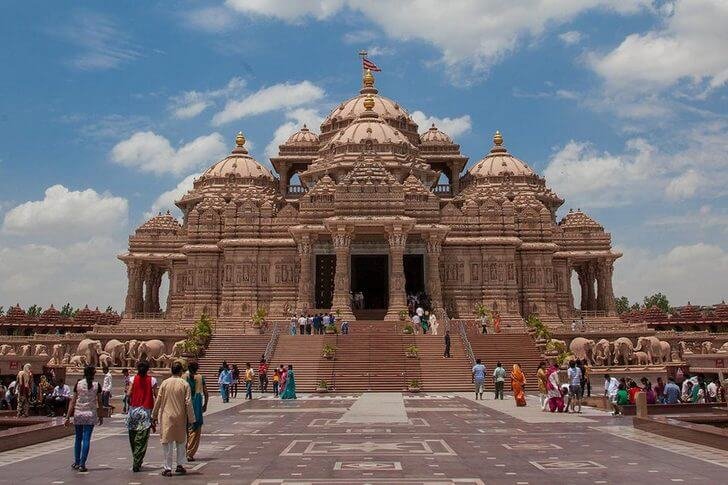
Address: Akshardham, Delhi, India
Phone: +91 11-2300-1650
Opening hours: 09:30 - 18:30
red fort
The attraction dates back to the reign of the Mughals. The first stone of the citadel was laid in 1639. The name is derived from the color of the walls of the fort. The architecture is dominated by Hindu motifs, but there are also Persian elements of decor. At the moment it is a tourist site. However, the place remains significant: here, on the country's Independence Day, the Prime Minister reads out an address to the nation.
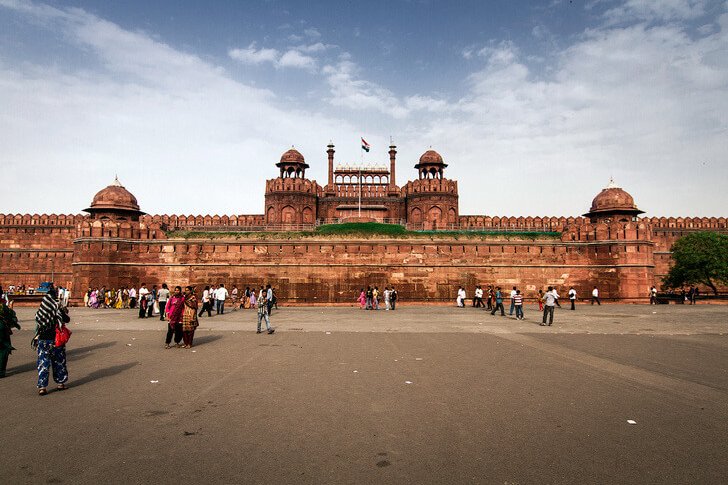
Address: Red Fort, Delhi, India
Phone: +91 11-2327-7704
Opening hours: 09:30 - 16:30
Gateway of India and Rajpath
The India Gate Monument is one of the most recognizable symbols of the city. It was created in honor of the soldiers who died on the fields of the Anglo-Afghan war and the First World War. The massive arch is 42 meters high and was inaugurated in 1931. The attraction is located on the "royal road" - this is how the name of the ceremonial avenue Rajpath is translated. There are parks on both sides of it.
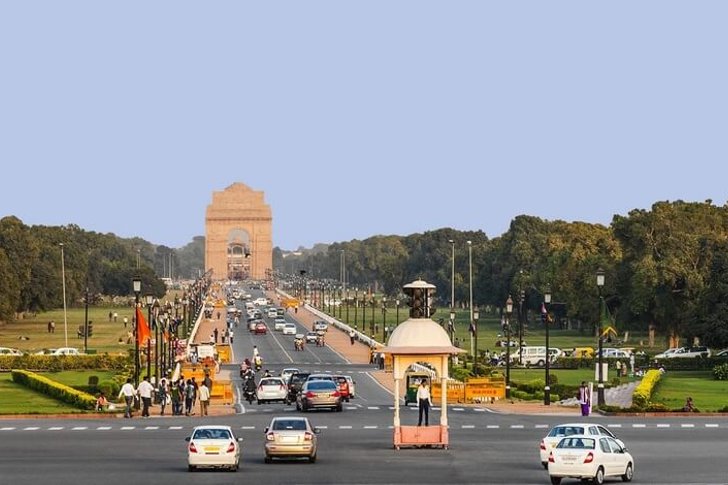
Address: India Gate and Rajpath, Delhi, India
Opening hours: 24/7
Rashtrapati Bhavan
One of the largest residences of the head of state in the world. It was erected at the beginning of the 20th century for the Viceroy of India. When the country gained independence, it was decided to place the state apparatus in the guest wing. The rest of the building is used for receiving official delegations and large events. Getting inside for an ordinary tourist is problematic: only by prior request and at certain times of the year.
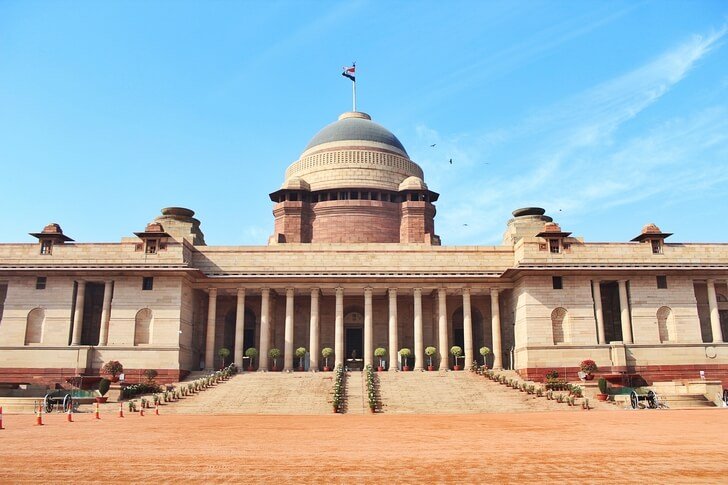
Address: Rashtrapati Bhavan, Delhi, India
Phone: +91 11-2301-1298
Opening hours: 09:00 - 17:00
Humayun's Tomb
At the initiative of the widow of the Mongol ruler, in 1562, a tomb was erected for Hamayun, more like a palace. The complex of buildings is surrounded by a garden. It is divided by two channels into four parts. Since Persian architects were responsible for the project, there are details of their culture in the architecture of the main building. Near the tomb of Hamayun there are several more iconic burials, including the tomb of Nile Gumbad.
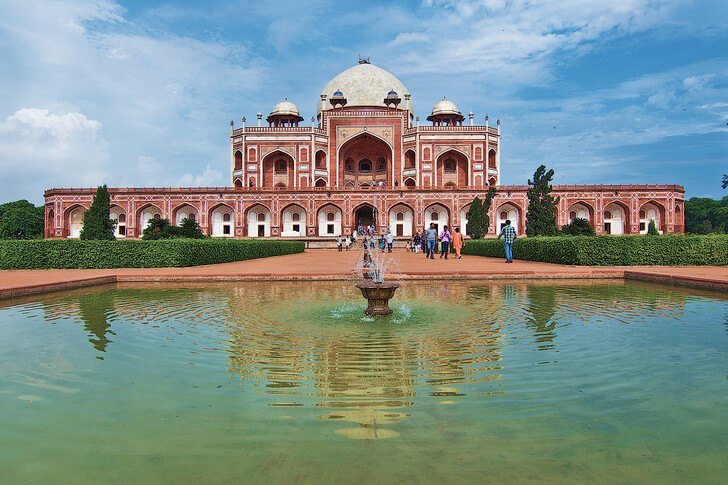
Address: Humayun's Tomb, Delhi, India
Phone: +91 11-2464-0492
Opening hours: 08:00 - 18:00
Lotus Temple
An unusual building appeared in the city in 1986. 27 marble petals are arranged in 3 rows and form a single composition. The height of the temple is about 40 meters. Since a pool is built around it, it seems as if the "flower" is in the water. There are no straight lines inside the premises - this is the idea of the designers. In addition, there are no inscriptions and objects of worship. The one who prays communicates directly with God.
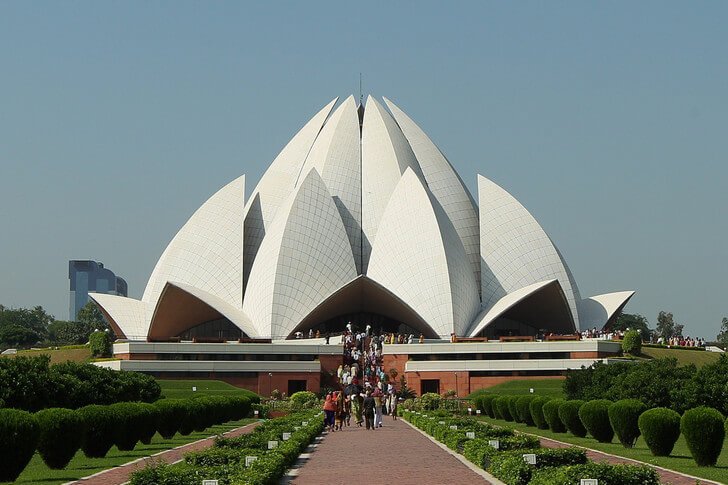
Address: Lotus Temple, Delhi, India
Phone: +91 11-2331-6362
Opening hours: 09:00 - 17:30
Minaret Qutub Minar
The construction of the tower stretched from 1193 to 1368. The minaret turned out to be five-tiered. To climb to its top, you need to overcome 300 steps. This object was conceived as a symbol of the victory of Islam over other religions. Calls to prayer were supposed to sound from its top, but the tower turned out to be too large for this purpose. History has preserved references to several suicides who jumped from the minaret.
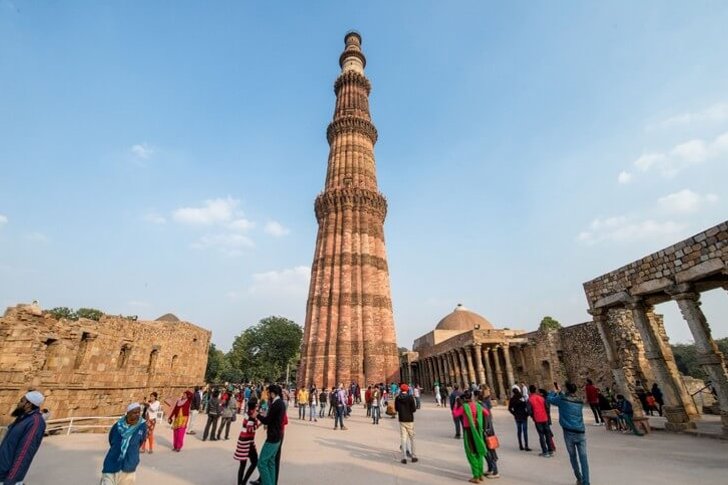
Address: Qutub Minar, Delhi, India
Phone: +91 11-2326-7506
Opening hours: 07:00 - 17:00
Chandni Chowk Market
Located in the area of the same name. The name translates as "a square filled with moonlight." Trade shops and pavilions occupy impressive areas. Almost all goods sold here are locally produced. You can find anything on the market: traditional spices, freshly cooked food, electronics, national costumes, arts and crafts.

Address: Chandni Chowk, Delhi, India
Opening hours: 09:00 - 21:00
Mahatma Gandhi Memorial
Gandhi's body was cremated at this spot in 1948. The memorial is made of marble and often decorated with flowers. It is engraved with the last words of the Indian leader. They translate as "Oh God!". The Eternal Flame burns nearby. Across the street, the National Gandhi Museum was opened in 1961. Among the exhibits: Mahatma's bed, clothes soaked in his blood, and the bullet that ended his life.

Address: Gandhi Smriti, Delhi, India
Phone: +91 11-2307-1127
Opening hours: 10:00 - 17:00
Gandhi Smriti Museum
Founded in 1973 and occupies the house where he spent his last days and was killed by Mahatma Gandhi. The museum collection consists of personal belongings of the Indian leader. At the place where he was shot, there is a Martyr's Pillar. Another notable detail of the house is a column with a swastika. It shows how much the original meaning of the symbol can be changed. The symbol of the sound Om is also applied to the column.

Address: Gandhi Museum, Delhi, India
Phone: +91 11-2307-1127
Opening hours: 10:00 - 17:00
National Museum of India
At the end of the 1940s, a large exhibition "The Art of India" was held in London. Since it was a success, the exposition was decided to be moved to Delhi and placed in the presidential residence. This became the basis for the creation of a full-fledged museum, which opened in 1949, and 11 years later took over the current building. At the moment, 200 thousand exhibits tell about 5 thousand years of Indian history and culture.
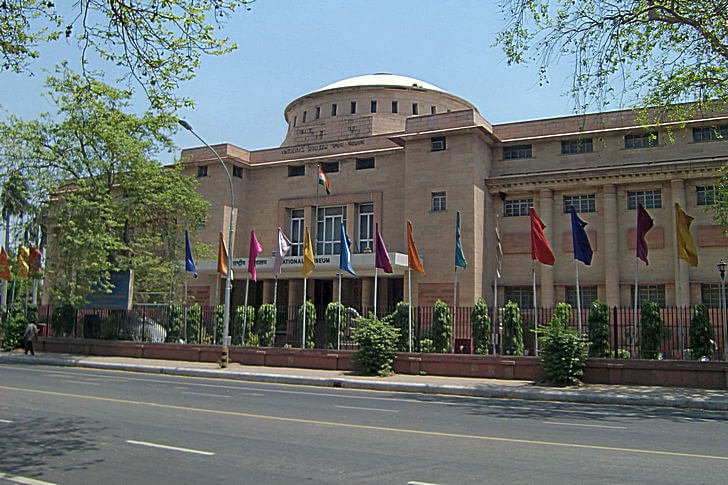
Address: National Museum, Delhi, India
Phone: +91 11-2338-0761
Opening hours: 10:00 - 17:30
National Railway Museum
Open since 1977. The most interesting part of the exposition is the original trains exposed in the open air or under canopies. Among them is the wagon on which the English prince traveled during his visit to India. One of the locomotives presented in the museum was assembled in the middle of the 18th century and is still on the move, although it is not used for its intended purpose. Numerous photographic materials and layouts are also available to tourists.
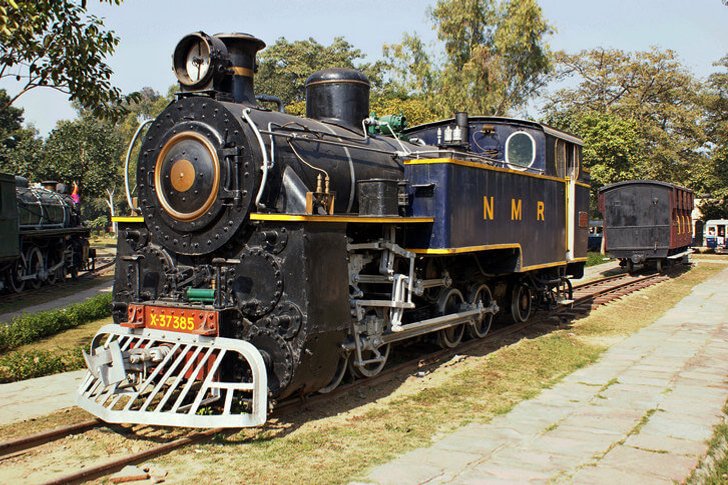
Address: National Rail Museum, Delhi, India
Phone: +91 11-2338-2798
Opening hours: 09:30 - 17:30
National Gallery of Modern Art
The exhibition of modern art in Delhi began in 1954. Later organized branches in other cities. The funds currently have about 14 thousand units of storage. There was not enough space for the exposition, so in 2009 a new wing was opened. The area around the museum building is a kind of exhibition area: sculptures and installations are located here.

Address: National Gallery of Modern Art, Delhi, India
Phone: +91 11-2338-4060
Opening hours: 10:00 - 17:30
Gurdwara Bangla Sahib
The main Sikh temple in the city. Built in the second half of the 18th century. From many areas, the building is noticeable because of its golden dome. The interior decoration is more modest, with the exception of the ceremonial hall. In the yard is the sacred pond Sarovar. Representatives of all faiths can visit the temple. You must take off your shoes before entering. Shoulders and knees must be covered, and women are required to cover their heads with a headscarf.
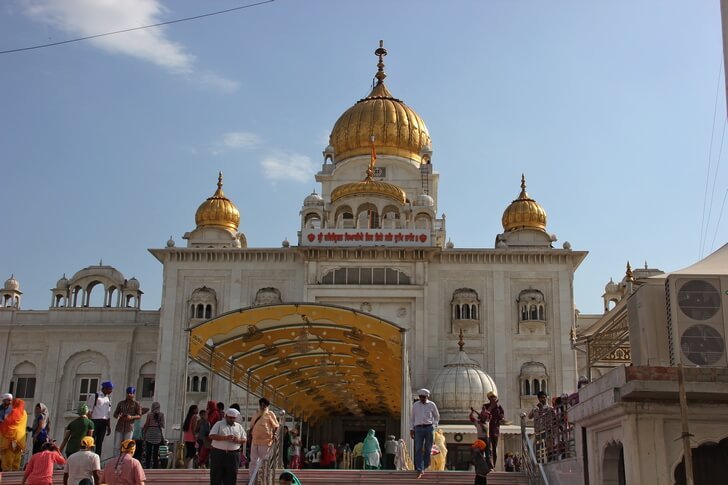
Address: Gurudwara Bangla Sahib, Delhi, India
Phone: +91 11-2336-6801
Opening hours: 24/7
Jama Masjid Mosque
The largest mosque in India. At the same time, about 25 thousand people can pray on its territory. It was built in the 50s of the XVII century. The interior design is replete with marble arches and inscriptions on the slabs - mostly sayings from the Koran. During the service, the entrance is closed to tourists who do not profess Islam. The rest of the time you can get inside, but without shoes and in special clothes.
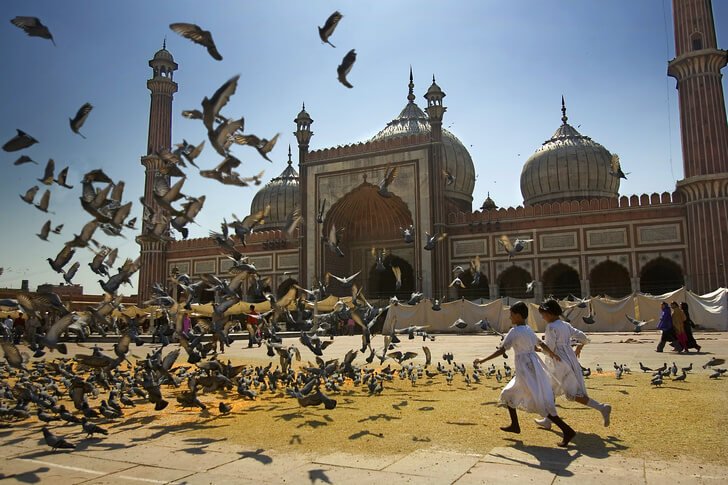
Address: Jama Masjid, Delhi, India
Phone: +91 11-2326-7498
Opening hours: 07:00 - 12:00, 13:30 - 18:30
Lakshmi Narayan Temple
The building can be called the "temple of all religions" of India. Construction was completed in 1939. The complex consists of several interconnected buildings. Here are shrines from Buddhism, Jainism, Hinduism. However, the temple is dedicated specifically to Lakshmi, the goddess of happiness. The interior decoration matches the exterior bright finish. The temple has souvenir shops, as well as a yoga room.

Address: Lakshmi Narayan Temple, Delhi, India
Phone: +91 11-2352-3748
Opening hours: 09:00 - 17:00
Chattarpur temple complex
Erected in honor of the goddess Katyayani in 1974. The temple complex covers an area of 24 hectares. It unites three temples at once. All of them belong to the traditional Indian architectural style. Pilgrims adorn the tree growing at the entrance with wish bracelets. The main temple only opens twice a year on the biggest holidays associated with Katyayani. In the other two, services run almost around the clock.

Address: Chattarpur Temple Complex, Delhi, India
Phone: +91 11-2656-3001
Opening hours: 06:00 - 19:00
Gurudwara Sis Ganj Sahib
It was built on the site of the cremation of the head of Guru Tegh Bahadur, the 9th teacher of the Sikhs. He sacrificed his life when Emperor Aurangzeb tried to convert the locals to Islam. The Guru withstood the torture, but did not accept a religion alien to himself, so he was executed. The temple was erected in the 17th century in a manner traditional for Sikh buildings. The central pedestal is one of the oldest such objects.
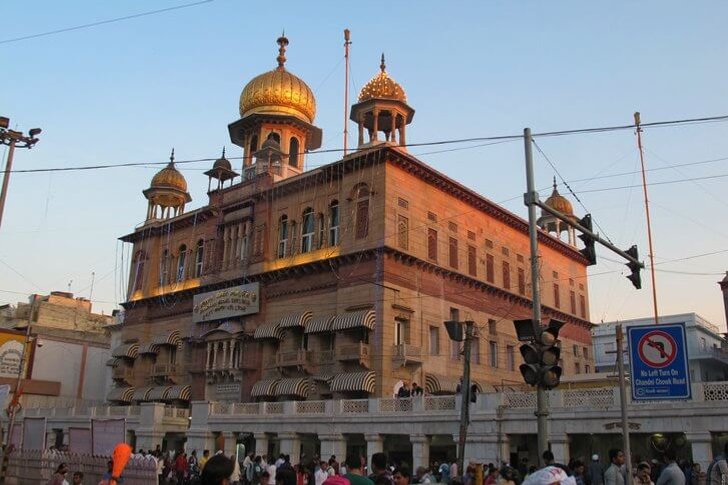
Address: Gurudwara Sis Ganj Sahib, Delhi, India
Phone: +91 11-2326-2491
Opening hours: 24/7
Radha Parthasaratha Temple
Hindu temple dedicated to Krishna and Radha. One of the largest in India. The project was developed by the famous architect Achyut Kanvinde, and he did not take any money for his work. For believers and those interested in the culture of Hare Krishnas, the doors of the temple were opened in 1998. Especially many guests and pilgrims come here during religious festivals: their number reaches several hundred thousand.

Address: Radha Parthasarathi Temple, Delhi, India
Opening hours: 06:00 - 20:00
Purana Qila fortress
Built in the 16th century. An iconic example of the defensive architecture of the Indian capital. The name translates as "old fort". The length of the walls is more than 1.5 km, the height is up to 18 meters, and the width is up to 15 meters. The fortress can be entered through three gates, but today only the main one is used. Inside the perimeter, the Qila-i-Kuhna Masjid and the library tower Sher Mandal are well preserved.

Address: Purana Qila, Delhi, India
Phone: +91 11-2337-6392
Opening hours: 09:00 - 17:00
Fort Tughlaqabad
Founded under the founder of the Tughlaq dynasty in 1321. The ruler entered into a long conflict with a revered preacher. He built together with the inhabitants the reservoir necessary for the district, and Tughlak ordered to work in the fort. Nizamuddin cursed the ruler, and he soon died, and his project was abandoned, 6 years after its foundation. Only part of the walls and the tomb of Giyas ad-Din Tughlaq have survived.

Address: Tughlaqabad Fort, Delhi, India
Opening hours: 09:00 - 17:00
Agrasen Ki Baoli Well
There is no exact date of construction. It is believed that the well appeared during the reign of King Agrosen. In the 14th century, the composition underwent structural changes. The archaeological site has 3 levels. Each is framed by arched niches on both sides. A wide staircase of 108 steps leads to the base of the well. The building looks massive and monumental.
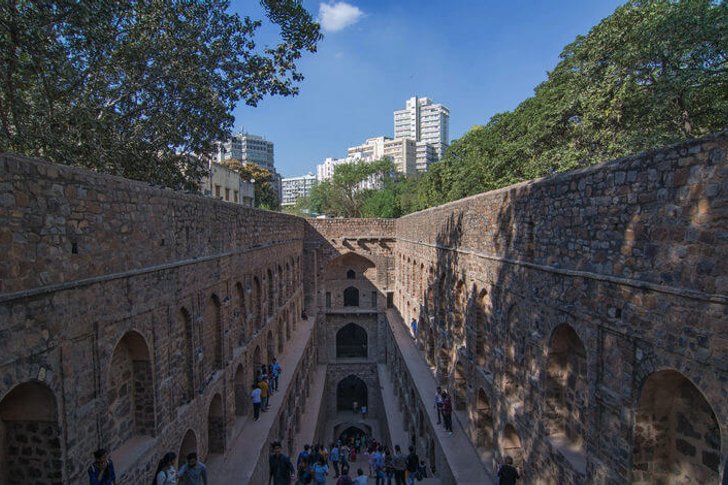
Address: Agrasen ki Baoli, Delhi, India
Opening hours: 09:00 - 17:00
Tomb of Safdarjang
Appeared during the reign of the great Mughals in the XVIII century. It was built in the image of the Taj Mahal. The tomb is the resting place of the prime minister at the court of Emperor Mohammad Shah. The memorial complex consists of several buildings. Some of them were inhabited by people in the past. The building currently houses the Archaeological Survey of India. An observation deck has been made on the upper terrace. There is a large park around.
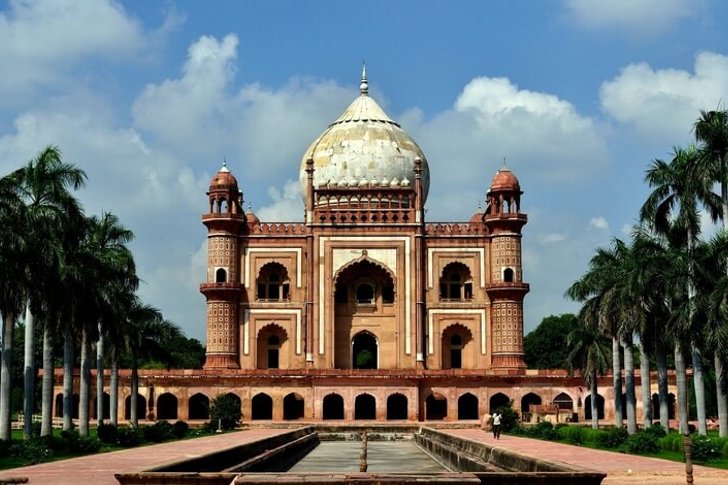
Address: Safdarjung's Tomb, Delhi, India
Phone: +91 11-2338-5790
Opening hours: 07:00 - 17:00
Mausoleum of Nizamuddin
Built in the 14th century. Nizamuddin Auliya is an important Sufi saint. This man was so respected that until now the mausoleum with pilgrimage missions is visited not only by Muslims, but also by representatives of other faiths. The entire district is named after Nizamuddin. Around is always clean, although the building is dense. Before entering the mausoleum, you must take off your shoes. Religious books and souvenirs are sold nearby.

Address: Nizamuddin's Tomb, Delhi, India
Opening hours: 06:00 - 20:00
Jantar Mantar
The observatory was created at the beginning of the 18th century to compile astronomical tables and calendars. It consists of 13 objects - special architectural astronomical instruments. By order of Maharaja Sawai Jai Singh II, 7 such observatories were built in different cities. They, like Jantar Mantar, are no longer used for their intended purpose as they are outdated, but are popular tourist attractions.
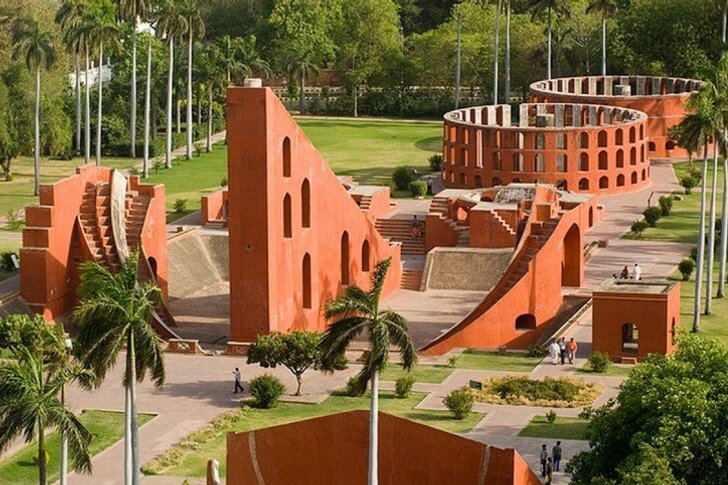
Address: Jantar Mantar, Delhi, India
Phone: +91 11-2336-7678
Opening hours: 09:00 - 17:00
Mehrauli Archaeological Park
The ruins of buildings from different periods, protected as ancient monuments. There are about 100 individual attractions in the park. Some of them date back to the XII-XIII centuries. The authorities of the country undertook the restoration of these objects, but so far only four dozen have been brought into proper form. Notable buildings: the tomb of Balban, the tomb of Shahid Khan, the well of Gandhak Ki Baoli.

Address: Mehrauli Archaeological Park, Delhi, India
Phone: +91 11 2614 0506
Opening hours: 09:00 - 17:00
Architectural complex Haus Khas
In the past, it was a village, part of the second largest city of the Sultanate in the 13th century. The first building is a huge pool, which gave the area its name. Over time, madrasahs, pavilions and mosques were built around it. Within the complex there is a park rich in living creatures, including peacocks. Many of the objects are well preserved, but their appearance is far from the original, so House Khas is now being restored.

Address: House Has Complex, Delhi, India
Opening hours: 09:00 - 17:00
Worlds of Wonder Amusement Park
The first entertainment zone opened in 2007 near Delhi. Gradually, the territory was expanded, adding new types of leisure. In addition to 20 attractions, there is a water park and karting. There are age restrictions as well as height restrictions related to safety. If you wish, you can buy a single ticket to visit the entire park. Small cafes and shops are at guests' disposal.

Address: Wonderland Amusement Park, Delhi, India
Phone: +91 11-2277-9002
Opening hours: 10:00 - 18:00
Mughal gardens
They are located on the territory of the presidential palace. The gardens were designed in 1924 and the species diversity has increased significantly since then. They are open to the public only one month of the year: from mid-February to mid-March. Each year, a main flower and main color is selected. For example, a red tulip or a yellow rose. Accordingly, the gardens themselves, as well as individual thematic exhibitions, are designed.

Address: Mughal Gardens, Delhi, India
Opening hours: 09:00 - 17:00
Gardens of Lodi
The picturesque park complex includes many interesting objects. In addition to alleys, flower beds, green lawns and ponds, tourists will be able to see the ruins, tombs, mosques and mausoleums. There is also a small butterfly sanctuary. Netting covers their habitats to protect them from birds. 50 species of flowering plants make the gardens bright and colorful throughout the year.
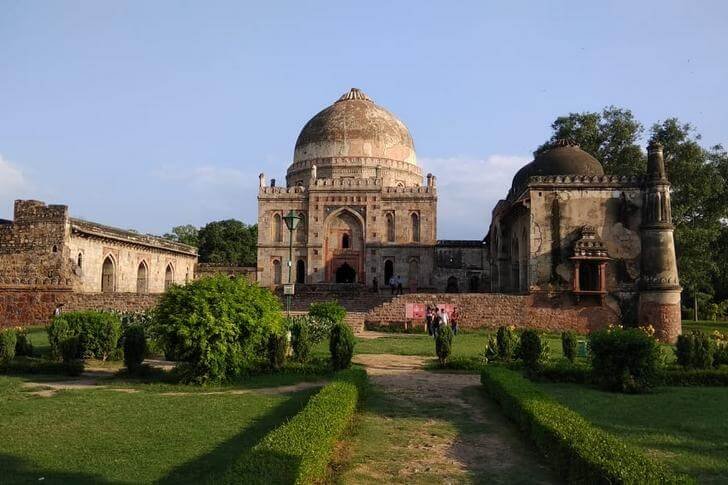
Address: Lodi Gardens, Delhi, India
Opening hours: 06:00 - 19:00
